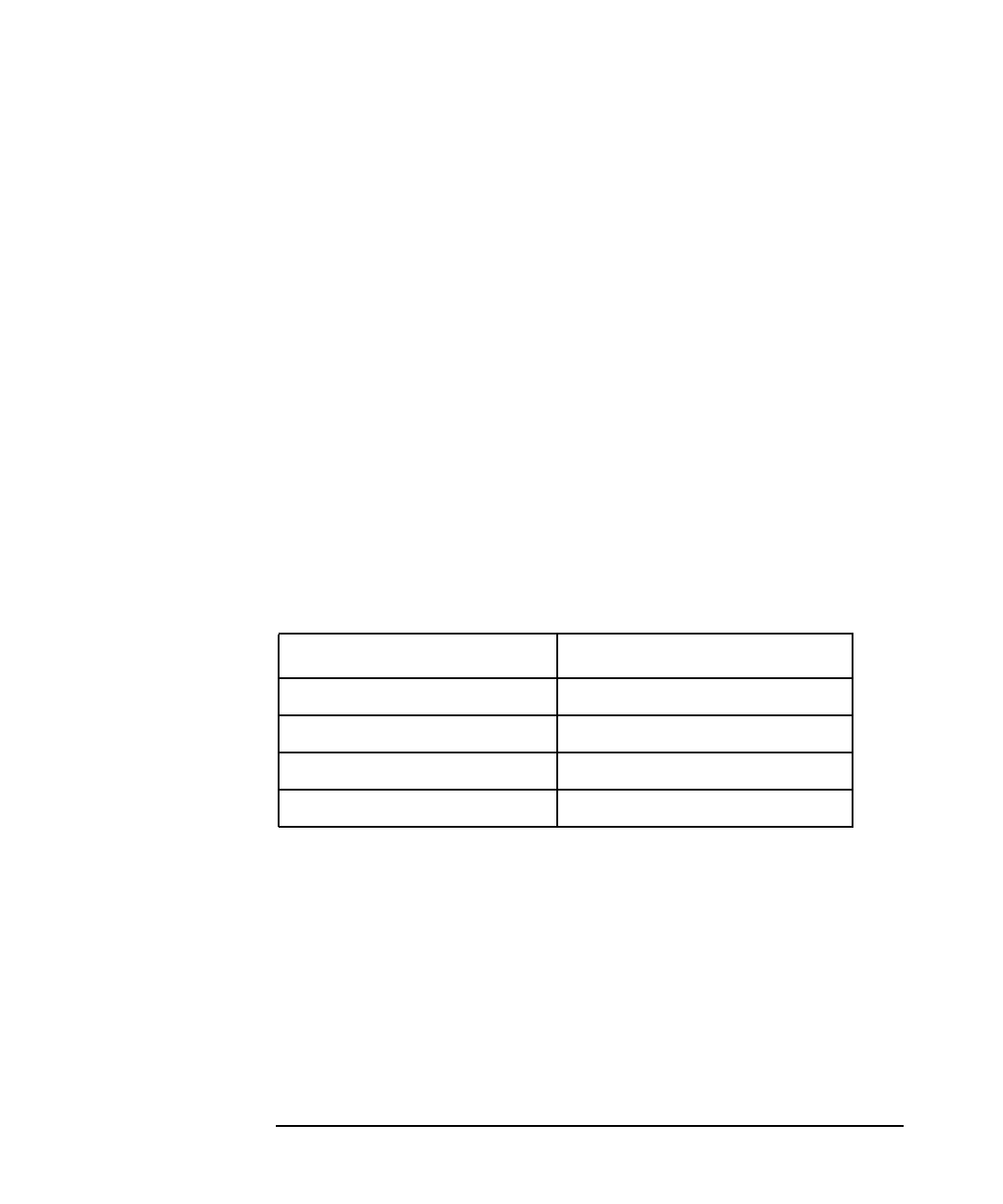HP-UX 11i Version 1.5 Release Notes, May 2001
Table Of Contents
- 1 Overview of the Release Notes
- 2 Workstation/Server Specific Information
- 3 HP-UX Features
- 4 File and Disk Management
- 5 Networking
- 6 Commands and System Calls
- 7 Programming
- aC++ Libraries
- Changes to libc
- libcres.a Library
- New libdcekt.sl and libdcecpkt.sl Libraries
- New Linux Compatible API Library
- New locale Libraries
- New Unwind Library
- X11 Libraries
- SNMP
- Machine Dependent Headers
- Threadsafe Documentation
- Obsolescence and Deprecation of APIs
- Linker Toolset
- gprof Multiple Shared Library Profiling
- CXperf Performance Monitoring Support
- HP Caliper
- WDB Debugger Tool
- ADB Debugger Tool
- Fortran
- Packaging for Specific Releases
- 8 Other Functionality

Programming
ADB Debugger Tool
Chapter 7 133
ADB Changes to Format Strings
In the new version of adb, format characters make adb syntax scalable
and regular. All format characters are now lower case with a preceding
optional length specifier character.
printf Style Format Strings
The new adb also supports printf style format strings, which should be
preceded by a comma and enclosed within quotes. In this case, the
format characters and length specifiers are the same as above, but flags,
field widths and precision can be specified just as for the printf()
library function.
Changes in ADB Writing and Searching
The old adb uses the format characters w and W for writing and l and L
for searching. However, the new adb uses characters w and l as regular
format characters. Therefore, in the new adb the following replacements
occur:
Impact of Changes on Pre-Existing ADB Scripts
The features or behaviors that are enabled in the backwardcompatibility
mode of adb (see Retaining Old ADB Behavior) are retained only for
supporting macros written for earlier versions of adb. No attempt is
made to preserve the interactive behavior as it will not affect macros.
Users are discouraged from using these features in new macros and
scripts, as these features may be obsoleted in a later version of adb. Most
of the new features introduced in this version of adb are not available in
the backward compatibility mode of operation of adb.
Table 7-3
Old Format Character Equivalent New Character
w =,2
W=
l /,2
L/










